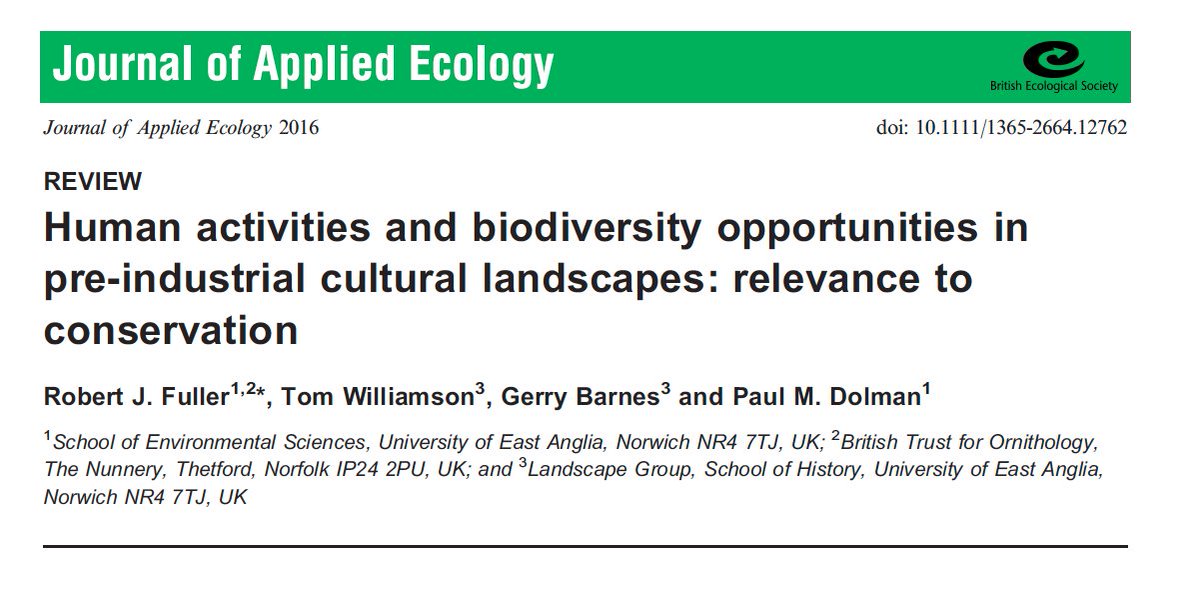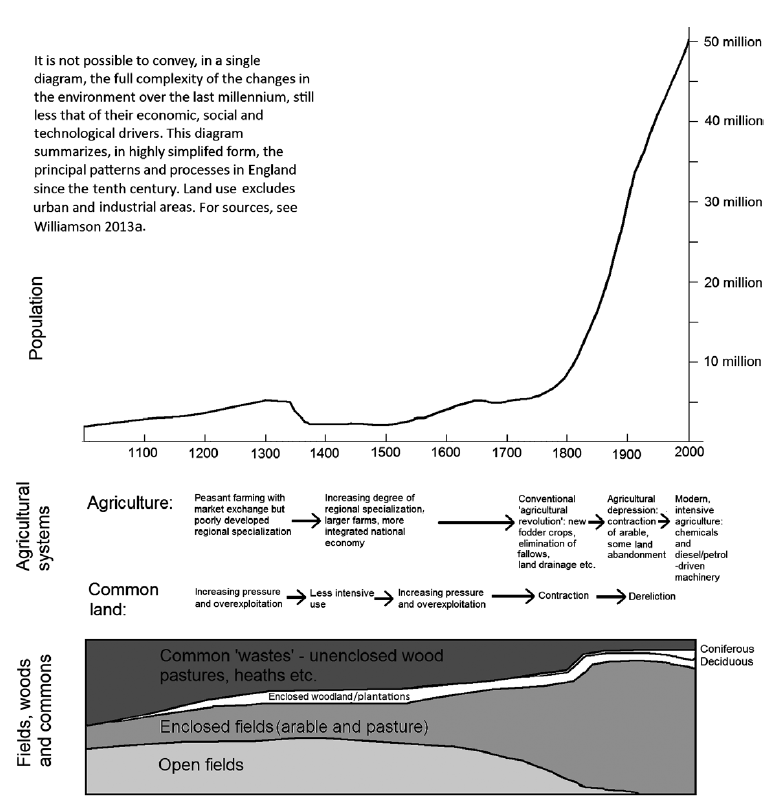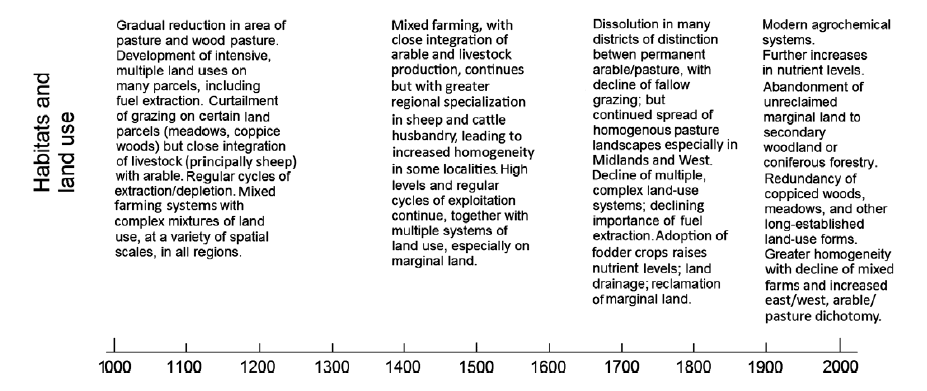1. Does nature conservation in England today accurately mimic traditional land use in the past? No, in some important respects argues Fuller et al.
Novel forms of conservation, including #rewilding , is recommended to restore more diverse mosaics to support biodiversity.
Novel forms of conservation, including #rewilding , is recommended to restore more diverse mosaics to support biodiversity.
2. The study was a collaboration between ecologists and historians to learn from land-use practices in the pre-industrial past to improve the conservation of semi-natural habitats in the present. The focus period is c. 1200-1750.
3. Key take home messages include:
1) Traditional management over this time varied considerably between different places & changed over time. So, there isn’t a standard form of management to mimic. This variety of practice itself is an important message for conservation today.
1) Traditional management over this time varied considerably between different places & changed over time. So, there isn’t a standard form of management to mimic. This variety of practice itself is an important message for conservation today.
4. 2) Extraction of raw materials (e.g. sand, gravel, fuel wood) was a big deal, & drove active disturbance regimes that supported early successional plants & associated animals. This may have mimicked rooting by wild boar, which was becoming rare.
5. 3) The most important change affecting biodiversity over the last 2 - 3 centuries may not have been intensification of land use (arguably it was more intense in the past), but the homogenisation of nature. Labelling habitat a single ‘habitat type’ is masking past heterogeneity
6. 4) “Heavily prescriptive approaches to conservation management applied widely on conservation land risk creating excessive uniformity and stability, likely to diminish rather than enhance diversity of vegetation structure and niches.”
7. 5) We can’t mimic the highly variable past, so the adoption of new practices and interventions that focus on the various ecological processes rather than simplified ‘habitat types’ is encouraged. In particular, increasing disturbance important (Hence link to rewilding)
8. Loads more detail exploring past landuse in different contexts from heaths to woodland is included and worth a read. Some discussion on the role of livestock and whether the high density of livestock reduced structural diversity in the vegetation or not, it’s hard to tell.
9. A really nice interdisciplinary paper by Fuller, @PaulDolman3 and colleagues from 2017 in @JAppliedEcology . It’s a review so hard to do it justice in a thread, but hopefully I’ve fairly captured some interesting take-home messages. https://besjournals.onlinelibrary.wiley.com/doi/abs/10.1111/1365-2664.12762

 Read on Twitter
Read on Twitter




